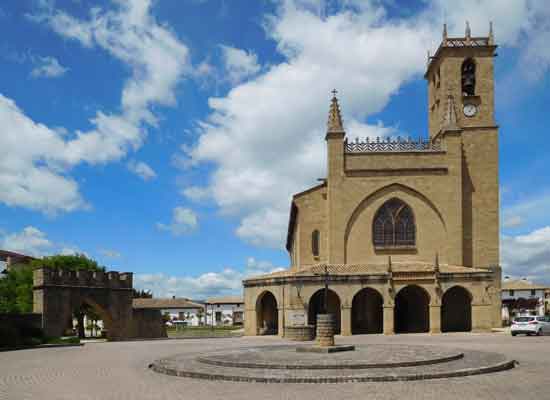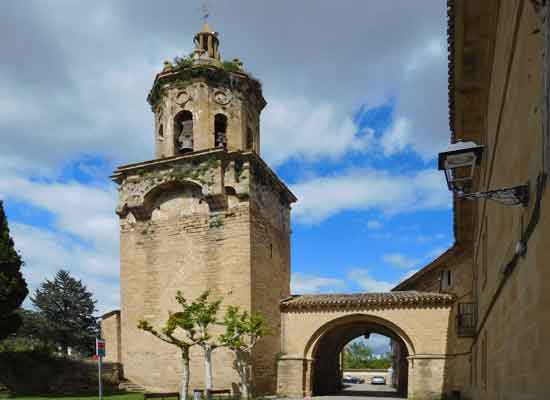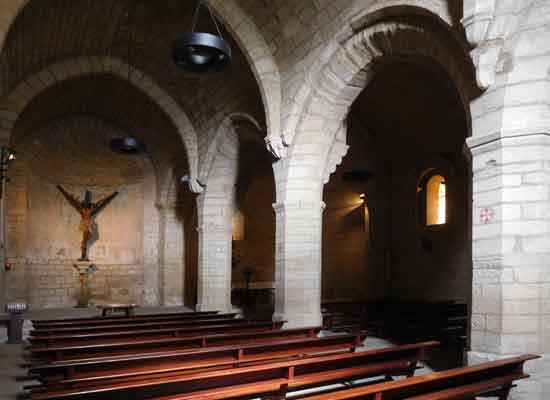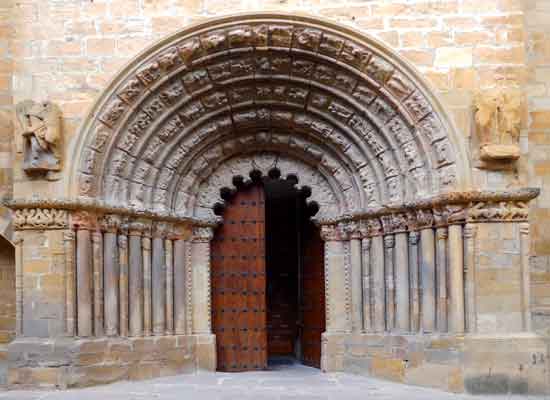Step by Step on The Way of Saint James
From Pamplona to Puente la Reina
14 May 2018
Stage 4 – 24 km

This new day on The Way also begins under a grey and rainy sky. Not to mention the temperature, which remains rather cool, forcing me to constantly wear both my sweatshirt and windbreaker.
– And to think I almost left them at home! –
Given that the weather was supposed to be much warmer, I had imagined that carrying warm clothes in my backpack would be an unnecessary burden.
From what the locals say, this kind of weather is unusual for this time of year; typically, temperatures around here are those of late spring.
***
I start at 07:20 and outside the hostel, I meet Rosario and Nicola, with whom I cover the first few kilometres of the day. As for the others, I have no news.
To leave Pamplona, we cross through the city centre, pass through the Citadel, and continue along the outskirts.
After crossing a bridge over the Autovia de Navarra, we reach Zizur Menor, the first village just outside Pamplona. Once past this, we finally return to green landscapes and dirt tracks.

Shortly before 10:00, I arrive in Zariquiegui, where I stop to eat something to complement this morning’s breakfast. While there, I take the chance to see the Romanesque church with its square tower, dating back to the 13th century, dedicated to San Andrés.
Here I meet Juanì and Salvador, and we take a picture together in front of the church.
The two of them start early in the morning and have quite a brisk pace. However, during the day, they like to stop often to eat or drink something comfortably seated.
Thanks to these breaks, I frequently run into them along The Way.
This morning’s path, although uphill, does not require any particular effort.
By 10:50, I reach the Alto del Perdón, located at an altitude of 770 metres.
This is one of the most anticipated stages of The Way. On this hilltop stands the “Monument to the Pilgrim,” created in 1996. It depicts an ancient caravan journeying towards Santiago de Compostela.
The monument bears the inscription, “Donde se cruza el camino del viento con el de las estrellas.”
Its translation reads: “Where the path of the wind crosses that of the stars.”
It’s worth mentioning that the wind blows very strongly in these heights. In fact, in addition to the monument, there are several wind turbines.
I have to wait a while before I can take a photo of the monument without the crowd of pilgrims who gather in front of it for pictures.
And I can’t blame them, because I too want a souvenir photo here. So, while waiting, I take one with Rosario and Nicola, and another with Helén, a cheerful American woman I’ve met several times.
In the end, my patience is rewarded, and I manage to get a shot of myself alone in front of the monument—and even one with just the sculpture, without anyone else in it.
I’m glad I took this photo, as among the 3,500 I captured throughout The Way, this is the one I find most emblematic, and it’s my chosen image for the cover of this account.
The descent towards Uterga, the next village, is more challenging than the climb that brought me here. In addition to being steeper, some sections have a rocky surface.
On the bright side, the scenery is splendid.
The rolling hills that stretch as far as the eye can see are completely covered in green wheat fields, and the swaying stalks create mesmerising waves in the wind.
Adding to this picturesque scene is the weather, which has improved, revealing large patches of blue sky dotted with fluffy clouds.
It is exactly midday when I pass through Uterga.
Without stopping, I see the 16th-century Church of La Asunción from the outside.

The last village I come across before reaching my destination is Obanos, where I pause to visit the neo-Gothic Church of San Juan Bautista, dating back to the 14th century.
Obanos is also the final stage of the Aragonese Way, the route that begins at the Somport Pass.
Pilgrims arriving here through the autonomous community of Aragon then continue on the French Way towards Santiago de Compostela.
I must admit that today, too, I gave in to the temptation to book my hostel in advance. So, arriving in Puente la Reina at 14:00, I head straight to Albergue Puente, saving time in the search for accommodation.
Looking back, I regret this decision because this town is home to the Refugio Padres Reparadores, one of the most significant hostels for pilgrims on The Way.
Even though the hostel I’m in is not bad, I regret my choice and resolve that from now on, I will avoid booking in advance—except in special cases that I will evaluate as needed.
In the afternoon, I take a sightseeing tour to discover this beautiful medieval town.
While leaving the hostel, I meet a young Italian man at the reception. His name is Paolo, and he tells me that he started The Way more than a month ago, walking directly from his home in Bergamo.


***
I begin my tour of Puente la Reina by visiting the Church of the Crucifix, whose origin is linked to the Templars. Inside, there is a large Gothic wooden crucifix dating back to the mid-14th century. Its arms—and consequently those of Christ—are unusually V-shaped rather than horizontal.
Continuing down Calle Mayor, I see the Church of Santiago, a Romanesque building from the 12th century whose architecture has undergone various modifications over time.
The pointed portal with repeating lobes is an architectural feature encountered only in this church, as well as in Cirauqui and Estella.
Inside the church, both the imposing altarpiece of the main altar and a polychrome wooden sculpture representing the Apostle are dedicated to Saint James. The statue is notable for its dark face and is therefore referred to as Santiago “beltza,” which means “black” in the Basque language.
Walking along the street to its end, I reach the Río Arga, where there is a beautiful Romanesque bridge that gives the town its name. It is distinguished by six semi-circular arches.
The ancient structure can be admired in its entirety from the riverbank, or even better, from the modern parallel bridge built nearby.

I meet Rosario and Nicola again, and since we’ve already seen the most significant landmarks in Puente la Reina, we continue exploring the town together, wandering around without a specific destination.
We also take the opportunity to buy some food for tomorrow at a supermarket we come across along the way.
I have dinner with the same group as yesterday, though this time we are only seven because one of us, due to serious physical issues, had to end his journey and return home.
We accompany tonight’s “pilgrim’s menu” with several mugs of sangria, although these are not included in the fixed price.
Among the second courses on the menu, I choose the bull meat, which I find tender and tasty.
At another table in the same restaurant, I notice Paolo—the man from Bergamo who started The Way directly from his home—having dinner with Fernando, a fit seventy-nine-year-old Argentinian marathon runner who’s even run at Machu Picchu.
The two are polar opposites in terms of age, origin, and interests, and probably in many other ways. Yet, they are likely united by the same healthy dose of “madness” that has led them here.
Back at the hostel, I find that my Spanish friends are also staying in the same dormitory.
While returning to my room to sleep, Salvador tells me that they’ve left some of the wine they drank this evening for me in the kitchen.
– How thoughtful of them! –
Honestly, I’m exhausted, but I don’t want to be rude. So, I invite Salvador to come down with me and keep me company while I finish the wine.
As we head downstairs, we meet Judith on the stairs, just coming back from her evening out. We invite her to join us too.
We sit and chat for a while, sipping what little wine is left in the bottle.
The conversation is mostly in Spanish, which makes it hard for me to follow everything—not just because of the language, which I don’t know well, but also because the political topics about Francoism are a bit complex for me to grasp.
On top of that, there’s my fatigue, the sangria from dinner, and now the wine.
I finally head to bed well after 23:00.
– I stayed up really late tonight! –
| © Aldo Lardizzone 2020 |  |
CREATIVE COMMONS |
Stage 5 - From Puente la Reina to Estella



